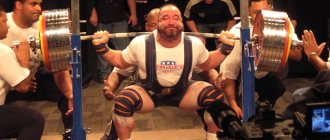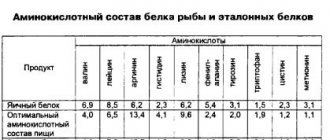Three kilometer run – middle distance, included in the program of the winter world championships in athletics. At the same time, at the summer championships, as well as at the Olympic Games, “smooth” 3000 meters are not run. They only run steeplechase, or steeplechase, over a distance of 3 km.
The world record among men belongs to Kenyan runner Daniel Komen, who covered this distance in 7.20.67 m. For women, the world record belongs to Wang Junxia, who ran 3 km in 8:06.11 m.
As for the category standards , men need to cover this distance in 10.20 minutes for the 3rd category, 9.40 minutes for the 2nd, and 9.00 minutes for the first. For women, the standards are as follows: 3rd category – 12.45, 2nd category – 11.40, 1st category – 10.45.
Why does a runner need to warm up?
Warm-up is a set of various exercises that prepare the body for a more serious load. Thanks to it, you can not only avoid injuries, but also make your workouts as effective as possible. The warm-up process warms up the muscles and ligaments, thereby reducing the likelihood of injury while running. Also, warmed muscles work much better, so the effectiveness of your workout increases.
Warming up gradually prepares the heart for stronger loads, and also allows you to saturate your muscles with oxygen due to improved blood circulation. Muscles prepared for exercise are more efficient. Warm-up also triggers the process of enhanced synthesis of hormones, which are responsible for the process of energy production in the body. Any workout is stressful for the body, and a good warm-up will help prepare for the stress. It also gives you psychological readiness for training, because it is impossible to get involved in this process instantly. Thanks to a proper warm-up, training is easier and more effective. You will also avoid injury and heart problems.
Improper or insufficient warm-up can lead to a variety of injuries. The most common among them is sprained ligaments. More serious and unpleasant is a joint injury, in which case you will need long-term rehabilitation. It is much easier to avoid injuries than to treat them later. Lack of warm-up can cause blood pressure surges or lead to heart problems.
The most effective workout simulates the competition you are preparing for.
This is the basic rule of training for any activity.
If you want to run 10 kilometers at a pace of 5 min/km, then you need to do several workouts at that pace. Exception: It is impractical to completely simulate a competition (especially long distances) as this will require a longer recovery time. Therefore, when preparing for a specific start, run a slightly shorter distance or do short segments with recovery breaks (interval training) at the desired pace.
- 10% rule
Increase your weekly training mileage by no more than 10 percent.
Joe Henderson, the first editor of Runner's World, and Joan Ullet, M.D., pioneered the ten percent recommendation:
“I've noticed that runners who increase their training load very quickly are susceptible to injury,” says Dr. Ullet.
Exception: if, after a long break from training, your mileage does not exceed 10 km per week, you can increase it by more than 10% until you reach your usual training load.
- 2 hour rule
There should be about two hours between eating and training.
"For most people, two hours is enough time for food to leave the stomach, especially if it's rich in carbohydrates," says dietitian Cindy Dallow.
Time after eating is necessary to digest what you eat. Otherwise, the risk of abdominal cramps, bloating and even vomiting increases.
An exception: after a light, high-carbohydrate meal, you can run within 90 minutes, while after a heavy meal, rich in protein and fat, you will need to wait up to three hours.
- 10 minute rule
Start each run with ten minutes of walking or slow jogging. Do the same for the cool down.
Warming up before running prepares the body for exercise by gradually increasing blood flow and raising muscle temperature. Perhaps even more important, stopping suddenly after running can cause leg cramps, nausea, dizziness, or fainting.
Exception: on warm days you will need less than ten minutes.
- Two day rule
If something hurts while running two days in a row, rest the next two days.
Pain that lasts two days may signal the onset of an injury.
“Even just 5 days off from running will impact your fitness level,” says Troy Smurua, MD, USA Triathlon team physician.
Exception: If something hurts for two weeks, even if you are taking a break from running during this time, consult a doctor.
- Habitual food rule
Don't eat or drink anything new before or during a competition or hard workout.
The gastrointestinal tract gets used to a certain composition of nutrients. Usually you can change this composition without problems, but in conditions of pre-race jitters you risk digestive problems.
Exception: If you can barely stand, eating unfamiliar food is probably better than eating nothing at all.
- Recovery Rule
For every two kilometers completed in a competition, allow yourself one day of rest before returning to hard training or competition.
This means no speed work or competition for six days after ten kilometers or twenty-six days after the marathon. The author of this rule is Jack Foster, holder of the world record among marathon running veterans:
“My method is about one day of rest from running for every two kilometers I run in a competition.”
Exception: If you haven't been running as hard as you can, you can reduce the number of rest days.
- Headwind and tailwind rule
A headwind always slows you down more than a tailwind speeds you up.
So keep in mind that on windy days you will run slower.
“I don't pay attention to my watch on really windy days because headwinds cost me 10 to 15 seconds every kilometer, and I can only make up a fraction of that if I turn around,” says Mont Wells, a long-distance runner in the windiest city in America, Amarillo, Texas.
The point is to control your effort, not your pace. Start against the wind, and halfway through the distance turn back so that the wind blows at your back.
Exception: when running with obstacles and a tailwind at your back, you will fly faster than usual.
- Rule of dialogue
You should be able to speak in complete sentences while running.
A recent study found that runners whose heart rate and breathing rates were within their target aerobic zone were able to recite the Pledge of Allegiance freely. Those who couldn't ran faster than their optimal pace.
Exception: it is impossible to talk calmly during speed work or competitions (and for some people it is difficult to speak in full sentences even at rest - note NB).
- 35 kilometer rule
Gradually increasing your mileage, run 35 km at least once before the marathon.
Long running simulates a marathon, which requires long periods of time on your feet. Knowing that you can run 35 kilometers will help you manage 42.
Exception: Some coaches suggest that for experienced marathoners, running 25 or 28 km is enough as their longest workout, while others advise running up to 38 km.
- Carb Loading Rule
Emphasize carbohydrates in your diet a few days before your long-distance race.
"Carbohydrate loading" became a marathon runner's mantra after Scandinavian research in 1967 suggested that bingeing on carbohydrates after a period of carbohydrate depletion created super-busy athletes.
Exception: carbohydrate loading during regular training or before a short distance race is gluttony. ?
- Seven year rule
Runners have been improving their performance for seven years.
Mike Timn noted this back in the early 80s:
“My seven-year adaptation theory was based on the fact that many runners I talked to averaged their best times in the first seven years after they started running.”
Exception: for runners with low mileage, improvement in results can take up to ten years.
- Left side of the road rule
For safety reasons, run towards traffic.
While running, it is better to see traffic than not to see it approaching from behind.
Exception: The right side of the road is safer if you are approaching a left turn with poor visibility and/or a narrow shoulder, or if there is construction on the left side of the road.
- Rule of running up and down
Running uphill slows you down more than running downhill speeds you up.
Therefore, keep in mind that running speed on hills is slower than on flat ground. When running down a mountain, you do not get back the energy spent running up.
Exception: When you're running on a trail that alternates uphill and downhill, your average pace will be faster than on a flat course.
- Sleep rule
For every two kilometers you travel in a week, sleep an extra minute each night.
If you run 60 kilometers a week, sleep half an hour more every night.
“Lack of sleep negatively affects training. The average person needs 7.5 to 8 hours of sleep, so increase it if you exercise,” recommends David Claman, director of the Sleep Disorders Research Center at the University of California-San Francisco.
Exception: Some high-energy people may not need the extra sleep.
- Refueling rule
Consume a carbohydrate-protein combination meal and drink within 30-60 minutes after an event, speed work, or long run.
"You need carbohydrate replenishment to replenish depleted muscle glycogen," says Nancy Clark, RD, author of The Marathon Runner's Eating Guide. "The ideal carb-to-protein ratio is 4 to 1. Some examples: 150-300 calories of low-fat chocolate milk, a recovery sports drink, yogurt, or a bagel and peanut butter."
Exception: Immediate refueling is not so important if you are not going to do a hard running workout within the next 24 hours.
- The rule is not only for running
Runners who only run are prone to injury.
“Contact or strength training will make you a stronger, healthier runner,” explains coach Chris Swartout. “Non-impact sports like cycling or swimming will help build the accessory muscles used in running, while giving the primary running muscles a chance to rest.”
Exception: The surefire way to run better is to run. Therefore, if your time is limited, devote the lion's share of it to running.
- Even pace rule
The best way to set a personal best is to maintain a steady pace from start to finish.
Most 10,000-meter and marathon world records set over the past decade have featured a steady pace maintained by the runners.
“If you run too fast early in a race, you will almost always pay for it later,” warns John Sinclair, the American 12K record holder.
Exception: This does not apply to hilly routes or windy days, where the goal is to control even effort.
- New sneaker rule
Change your sneakers after every 600-800 kilometers.
“But even before they get that worn out,” says Warren Green, editor of Runner's World, “buy a new pair and alternate them with the old one for a while. Don't wait until your only pair turns into junk."
Also keep in mind that the shoes will be worn out after spring.
Exception: The rate at which running shoes wear out may vary depending on the type of running shoes, your weight, how your foot strikes, and the surface you run on.
Despite the fact that the 5 and 10 km running distances are short and seemingly easy to overcome, it is not so easy to learn how to run them quickly.
Running a 5K requires almost maximum effort throughout the entire distance. For many, this run lasts 20 to 30 minutes, which is long enough to run close to your limit. If you go to the start unprepared, suffering in the second half of the distance is guaranteed.
The 10 km distance is different in that it requires both speed and endurance while running slightly slower than 5 km, but at a distance twice as long. If you make a slight mistake with the choice of pace or are not well prepared, then at the end of the distance you will have a hard time.
Therefore, your training plan should prepare you physically and mentally for all the challenges of these distances: training your body and mind to overcome the most difficult stages of the run, developing a suitable pace that will allow you to complete the distance at your maximum ability.
A good training plan will improve your chances of achieving your race goals. So in this article you'll find specific training tips and examples to help you update your 5K and 10K personal best.
- Light/heavy rule
After a hard training day, allow yourself one “easy day.”
“Easy” means short, slow runs or no training at all. A “hard day” is a long run, tempo run, or speed work.
"Give your body the rest it needs to make your next hard workout more effective," advises two-time Olympian Todd Williams.
Exception: After the most grueling speed work or long runs, especially if you're 40 or older, wait two or even three days before your next challenging workout.
- 10 degree rule
Dress for running as if it were 10 degrees warmer outside than the thermometer actually shows.
In other words, dress according to how you'll feel in the middle of your run, not during the early miles when your body is still warming up.
“For cold days, it's a lightweight, warm, and breathable top and tights,” says Emily Walser, clothing writer for Sporting Goods Business Magazine.
On warm days, wear light, functional clothing that evaporates sweat well.
Exception: at temperatures above +20 degrees, wear minimal, light clothing in light colors.
Below is a guide to help you dress appropriately for your running workout. Please note that on very windy days you may need to dress warmer.
| Above 20° | Light/light T-shirt and shorts |
| 15° – 20° | T-shirt (possibly with straps) and shorts |
| 10° – 15° | T-shirt and shorts |
| 5° – 10° | Long-sleeve T-shirt and tights or shorts |
| 0 – 5° | Long Sleeve T-Shirt and Tights |
| -5° – 0 | Two top layers and one bottom layer |
| -10° – -5° | Two top layers and one bottom layer |
| -15° – -10° | 2-3 top layers and 1-2 bottom layers |
| Below -15° | 3 top layers, 2 bottom layers |
- Pace rule for speed work
The most effective pace for maximizing oxygen consumption is 20 sec/km faster than your 5K pace.
The best way to increase aerobic performance and speed over long distances is to do VO2-max interval training. The pioneer of such training is Jack Daniels, Ph.D. and trainer:
“By challenging the aerobic system,” he says, “this pace optimizes the volume of blood pumped and the amount of oxygen your muscles can use.”
Exception: for fast runners this pace is: 10 seconds faster per kilometer from 5k pace, and for slow runners - 30 seconds faster.
- Tempo run rule
Your anaerobic threshold, or speed, for a tempo run should be something you can maintain while running as hard as you can for an hour.
This pace should be approximately 15 seconds slower per kilometer than your 10K pace, or 30 seconds slower per kilometer than your 5K pace.
The main benefit of this pace is that it is fast enough to build endurance for long, hard workouts, but slow enough to not overload the muscles. The ideal duration for a tempo run is 20-25 minutes.
Exception: For fast runners, this pace will be less than -15 seconds for 10K pace (ie -5-10 seconds). For slow ones - a little more than -30 seconds from the pace (i.e. -35-40 seconds) per 10 km.
- Long Distance Pace Rule
During long workouts, keep your pace at least two minutes slower per kilometer than your 5K pace.
"You really can't run very slowly during long runs," says Jeff Galloway, a correspondent for Runner's World. But very fast, tempo running can increase recovery time and increase the risk of injury.”
Exception: on hot days you need to run even slower.
- Finish time rule
The longer the race, the slower your pace.
Exception: The terrain, weather or your well-being on the day of the competition takes precedence over this rule.
Spreader
A great exercise to prepare for running is stretching. It develops well not only the leg muscles, but also coordination of movements. The muscles of the back of the thigh work most actively. Their development is very important, because they are actively involved in the running process. The exercise must be performed within a minute. Get into a stable lunge position, sharply push your feet off the floor and change their position. If at first the left leg was in front, now the right leg should be in its place.
By the way
In the era of advanced technologies, convenient and affordable heart rate monitors appear. With their help, you can track your heart rate while running, thereby keeping your pace within your capabilities. Next year I plan to purchase such a thing. Once I test it, I’ll definitely write a post on the topic of running with heart rate monitoring. (already bought, tested and wrote my review in the article here) Anyone who already uses this thing, please briefly describe the benefits in the comments.
Jumping on a support and jumping out of a half squat
Another exercise that helps prepare for running is jumping jacks. Any stable support of small height will do; its role can be played by a low bench, curb, stone, log, and so on. The exercise warms up the calf muscles, as well as the back and front of the thigh. Regular lunges can strengthen your ankle. Do ten exercises on each leg. Strengthening your calf muscles helps you avoid a number of fatigue injuries.
When jumping out of a half-squat, the knee joint and quadriceps femoris muscle work. A good warm-up of your knees is very important, because they bear a lot of stress while running. Perform three series of ten to twenty jumps, landings should not be hard.
Why don't people warm up before a race?
Beginners doubt the need for this, believing that a set of exercises can replace a few minutes of light jogging at the beginning. However, such running is only one of the stages of preparation for the main part of the run. When running, not all muscle groups are involved, while it is in the process of full stretching that every part of the body is activated. This makes training less traumatic and improves results. It has been scientifically proven that preparation for the main part of the lesson increases their effectiveness. Professional athletes talk about the same thing and warn about the dangers of “cold” training.
Advice from professionals
Warming up should not cause discomfort; it is needed to prepare your body for stress, so you should not load it right away. Exercises begin to be performed from top to bottom, first stretching the neck, arms and shoulders, body, and then legs. The legs need to be given special attention, because they are the ones that work when running. The pace should be dynamic, but gentle. You need to start slowly and gradually speed up.
The duration of the set of warm-up exercises should be about ten minutes. This time is enough to prepare the body for running and tune it in the right way. First, a light cardio warm-up is performed for one to two minutes. Next, joint gymnastics is performed, which also takes a couple of minutes. Two to three minutes are devoted to dynamic muscle stretching exercises. Next, cardio warming is carried out again and breathing is restored. After such a complex, your body will be completely ready for running.
Joint exercises will help prepare your joints for work. Cardio warming is necessary for better blood flow to the muscles, and dynamic stretching will make them more elastic.
How long will it take to prepare for the race?
The answer to this question depends on your fitness level and health status. “Everything always depends on the person, his capabilities and goals,” comments Ksenia Sharifulina, instructor of group programs at the Fitness Territory - Lyubertsy club. “You can prepare for the GTO standards for running (a distance of 3 km) in a month or two, it is important to work at a comfortable pace.”
Many beginning runners “sin” by immediately trying to load themselves to the maximum. Therefore, forget about statements like “Starting Monday I will start running 3 km a day.” “The mistake of beginners is that they want to get quick results, but often this only leads to injuries and disappointments,” says Svetlana Shestakova, coach of the Running Community . - Start small - train yourself to take 15-30 minute walks at a brisk pace in the morning. Just 2 weeks of regular walks will help the body adapt and get used to the stress. Pay attention to your pulse at this time. If at a normal walking pace it exceeds 150-170 beats per minute, then the body is not yet ready for more serious loads. At first glance, a distance of 3 km seems really small, but if a person has never run before, then he should prepare gradually. Preferably under the guidance of a professional trainer.”
Do you exercise regularly for at least six months and have no contraindications to running? You can expect to prepare for a 3 km race in a month to a month and a half.
Warm-up before the marathon
Warm-up before marathons, half-marathons, and ten-kilometer races follows the same pattern. When performing exercises, you need to monitor their correctness, as well as your breathing. Before short races, you need to pay more attention to warming up, since during marathon races the body continues to warm up during the first kilometers of the race. Before long-distance races, it is recommended to do several short races of 50-70 meters in length with acceleration. Acceleration makes it possible to perfectly warm up all muscle groups that are involved in running. It also stimulates metabolism.
3 km running tactics
As in many other middle distances, the three-kilometer race requires proper distribution of forces. Professional athletes run the first part of the distance slower than the second. It’s very difficult for amateurs to repeat something like this, but you have to strive. It is necessary to try to ensure that the first and second halves of the distance are completed in approximately the same time. If you don’t know your strengths, then start slowly, and look at the distance to see if this pace suits you, or if you should speed it up.
The finishing acceleration must begin no later than 400 meters before the finish.
Runner's Diet Guidelines
For any type of physical activity, proper nutrition is important to provide the body with the necessary energy and promote rapid recovery after training. And here we must not forget about the principle of planning; you need to change the nutritional system gradually, allowing the body to get rid of bad habits. Experts recommend sticking to the digital ratio: carbohydrates – 50%, proteins – 30%, fats – 20%. Carbohydrates are called "runner's fuel." It is important to get high quality carbohydrates that are easy to digest.
After jogging for an hour, the body needs enough calories to repair muscles. But this does not mean that you need to empty all the stocks of the nearest bakery. A couple of bananas and a carbohydrate sports shake will be enough.
The dangers of not warming up
Most often, lack of warm-up threatens with sprained ligaments. This is very painful, and you will also have to abstain from physical activity altogether for some time.
It is much more serious and unpleasant to injure a joint. Recovery will take a long time, but even after it, the old injury will make itself felt. When running, the joints of the legs, as well as the hip joint, are affected.
Cold activities are also dangerous for internal organs. They provoke dizziness, loss of consciousness, pressure surges and discomfort - the well-known pain in the side.
Training Recommendations
Standard training programs, commonly referred to as “couch to 5K,” are an average 8-week training program. Do not forget about the individuality of each organism. Perhaps your preparation time will be reduced to 4 weeks, as many promise.
Training should be carried out no more than 3-4 times a week, with 30 to 45 minutes allocated for running training in each session. The duration of the main training sessions indoors and on the ground is 1-1.5 hours, on the track 50-70 minutes. This includes warm-up, cool-down, stretching, rest, consultation with a trainer.
At this time, a variety of physical exercises are used on a large scale, increasing the level of development of basic qualities - strength, speed and general endurance. The experience of leading athletes and special studies show that it is advisable to devote up to 60-75% of training time to general physical training in this period. The main means are slow running, the duration of which gradually increases, at first evenly, and later variable, with light short accelerations.
Don’t forget about the defining word – gradualism! It is recommended to add variable running to your training plan no earlier than the fifth week of classes. In repeated and variable running, the following factors must be taken into account: the length of the training segments, running speed, number of runs, duration of rest intervals between runs, nature of rest.
Beginners are recommended to participate in competitions no earlier than 2 months after the start of classes.
I often see a fair amount of shyness in newcomers. They are afraid of what people around them will think. There is no need to be embarrassed about how you look, even if your actions seem awkward to you. Over time, this will pass, and with the right preparation, you will soon look very confident while jogging and participating in competitions.
How to warm up before running correctly
You can and should start doing a running warm-up after 10 minutes of light jogging. After such an easy jog, you need to warm up and then continue jogging. The warm-up should include exercises for all parts of the body, especially the neck, back and legs, as well as stretching. It is optimal to devote 7-15 minutes to warm-up. Exercises, with the exception of cardio, are not performed too quickly, but not too slowly.
Important! It is important to note that all exercises are performed smoothly, without any sudden movements. There should be no pain, just slight tension in the muscles. If it occurs, then you need to change the intensity of the effort.
It is also necessary to breathe correctly: take deep breaths through your nose and exhale slowly through your mouth, without holding your breath. The benefits of such breathing are colossal - this way the body is saturated with oxygen.











